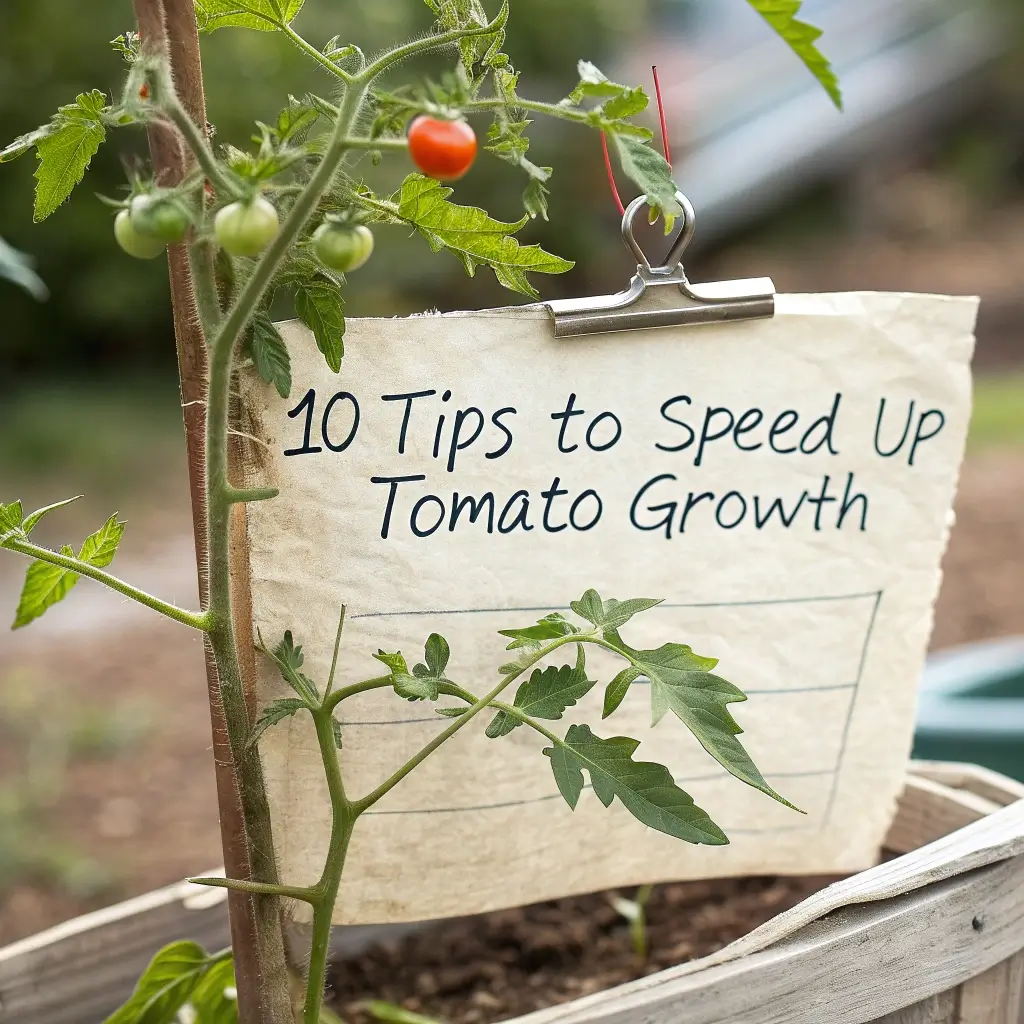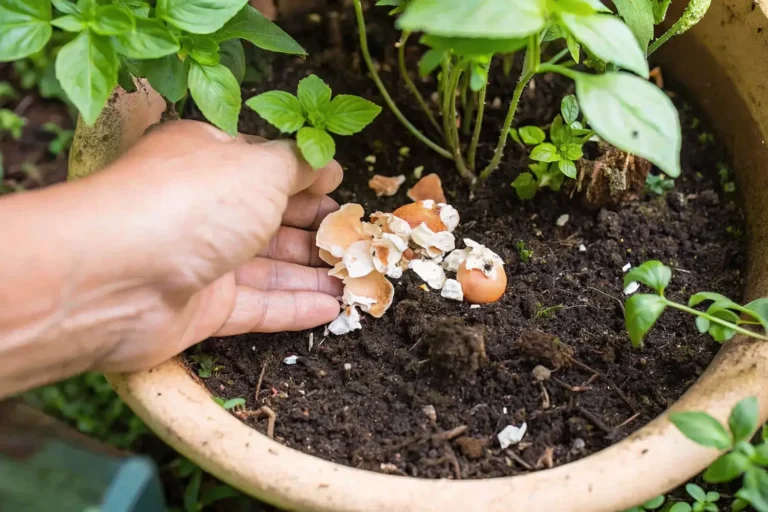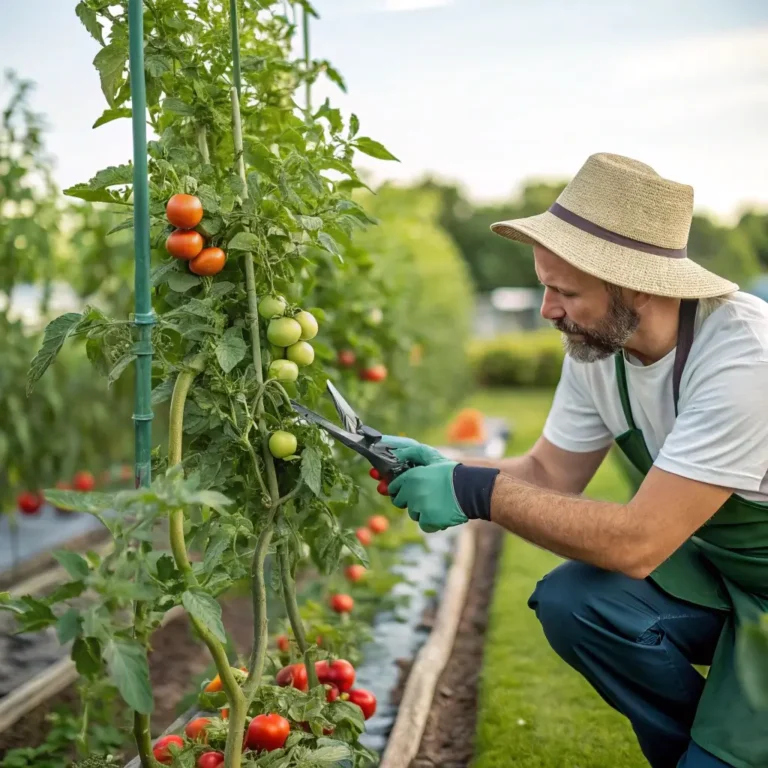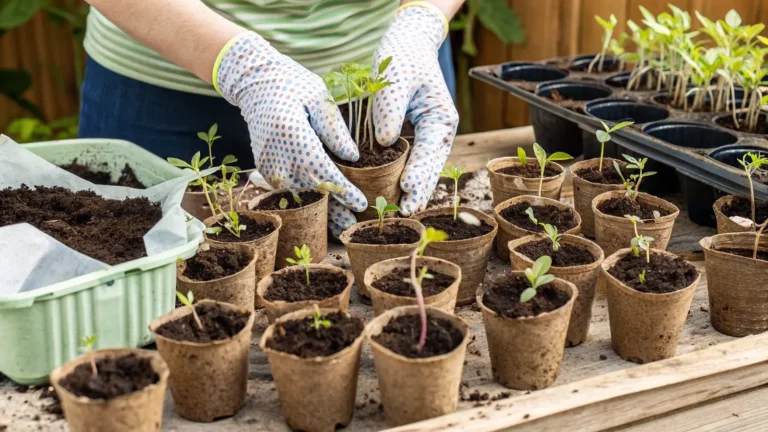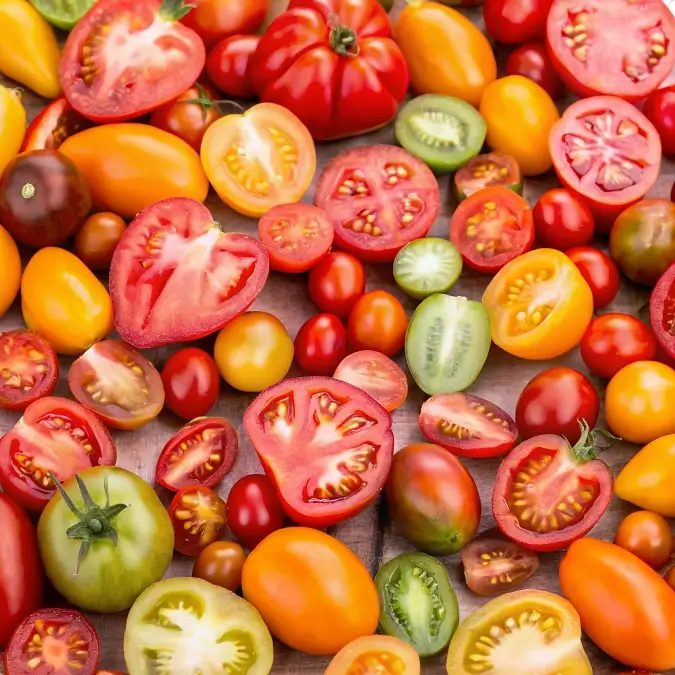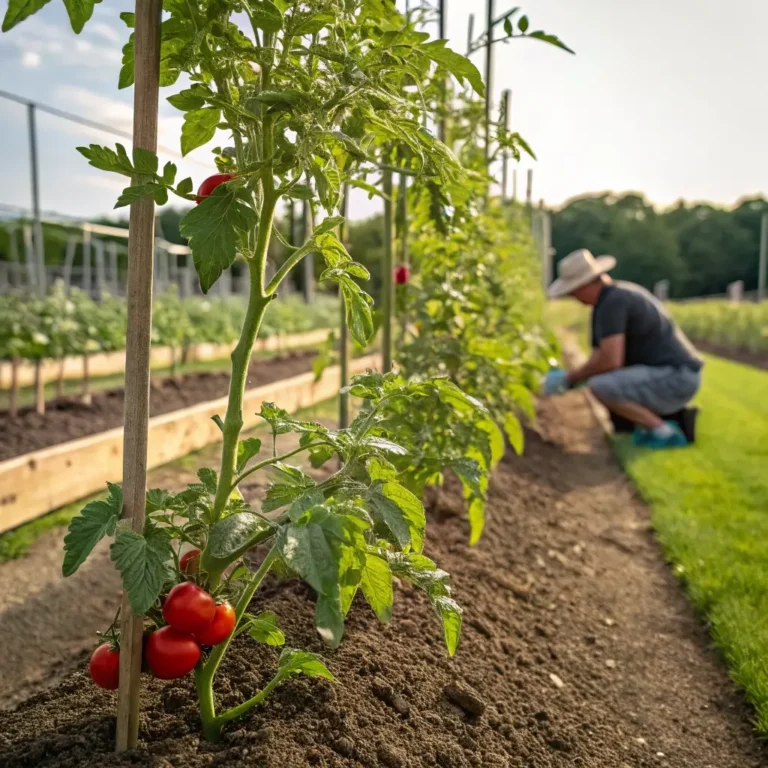10 Tips to Speed Up Tomato Growth: Best Hacks for Bigger Harvests
Table of Contents
Introduction
Did you know that the average home gardener harvests only 5-10 pounds of tomatoes per plant, while professional growers often achieve 20-30 pounds from the same varieties? This significant gap isn’t just about having a green thumb – it’s about implementing science-backed growth strategies that dramatically accelerate tomato development. If you’re looking to transform your modest tomato patch into a thriving, abundant harvest machine, these 10 tips to speed up tomato growth will revolutionize your gardening approach. From soil preparation secrets to timing techniques that professional growers don’t share widely, these methods have been tested and proven to boost yields by up to 60% in various growing conditions.
Essential Ingredients for Accelerated Tomato Growth
To implement our 10 tips to speed up tomato growth effectively, you’ll need:
- High-quality tomato seedlings or seeds (cherry, roma, beefsteak, or heirloom varieties)
- Well-draining, fertile soil with pH between 6.0-6.8
- Balanced organic fertilizer (NPK ratio of approximately 5-10-10)
- Compost or well-rotted manure
- Calcium supplement (eggshells or garden lime)
- Epsom salts (magnesium sulfate)
- Mulching material (straw, wood chips, or black plastic)
- Pruning shears (clean and sharp)
- Support structures (cages, stakes, or trellises)
- Watering system (drip irrigation preferred)
Substitution options: If commercial fertilizers aren’t available, use fish emulsion (5-1-1) combined with bone meal to achieve similar nutrient profiles. Crushed seashells can replace eggshells for calcium, and newspaper or cardboard can substitute for traditional mulch in a pinch.
Timing
Implementing these acceleration techniques requires strategic timing for maximum effectiveness:
- Preparation time: 2-3 weeks before planting (30% less than conventional methods)
- Initial growth phase: First 4 weeks after transplanting (critical acceleration window)
- Mid-season boost: 6-8 weeks after transplanting (when first fruits appear)
- Total time to harvest: 45-65 days from transplanting (potentially 15-20% faster than standard growing methods)
Step-by-Step Instructions
Step 1: Select Fast-Maturing Varieties
Choose determinate varieties like ‘Early Girl,’ ‘Fourth of July,’ or ‘Stupice’ that naturally mature 15-20 days faster than standard varieties. These cultivars are genetically predisposed to rapid growth cycles and can produce ripe fruits in as little as 50-60 days from transplanting. For even speedier results, cherry tomato varieties typically mature faster than larger slicing types.
Step 2: Pre-Warm Your Soil
Increase soil temperature by 10°F using black plastic mulch applied 2-3 weeks before planting. This simple technique can accelerate early growth by nearly 25%, as tomato roots develop most actively when soil temperatures reach 70-80°F. For gardeners in cooler climates, this step alone can reduce time to harvest by 7-10 days.
Step 3: Perfect Your Planting Technique
Bury tomato seedlings deeper than their original soil line, with up to 2/3 of the stem underground. This encourages extensive root development along the buried stem, increasing nutrient uptake capacity by up to 30%. Plant in late afternoon to reduce transplant shock and water immediately with a starter solution containing phosphorus to stimulate root growth.
Step 4: Implement Strategic Watering
Establish a consistent deep watering routine of 1-2 inches weekly, preferably through drip irrigation. This approach delivers 40% more usable water to the root zone compared to overhead watering. Once fruits begin to develop, slightly reduce watering frequency but increase volume to encourage faster ripening and prevent splitting.
Step 5: Apply Balanced Feeding Schedule
Feed plants with a tomato-specific fertilizer (lower in nitrogen, higher in phosphorus and potassium) every 14 days after the first flowers appear. This precise timing optimizes nutrient availability during the critical fruit development phase. Apply 1 tablespoon of Epsom salt per plant monthly to provide magnesium that accelerates chlorophyll production and energy conversion.
Step 6: Master Strategic Pruning
Remove suckers (side shoots that grow between the main stem and branches) when they reach 2-3 inches long, focusing on the bottom 6-8 inches of the plant. This redirects up to 25% more energy to fruit production rather than foliage growth. For indeterminate varieties, limit the plant to 2-3 main stems for maximum growth acceleration.
Step 7: Optimize Sunlight Exposure
Position plants to receive 8+ hours of direct sunlight daily, with morning exposure being particularly beneficial. Remove leaves that shade developing fruit clusters, as this simple adjustment can increase fruit temperature by 2-4°F, speeding ripening by several days. Consider reflective mulch to boost light exposure to lower portions of the plant.
Step 8: Provide Perfect Support
Install sturdy cage or stake supports before plants reach 12 inches tall to prevent root disturbance later. Proper support keeps foliage off the ground, improving air circulation and reducing disease pressure by up to 65%. Horizontal trellising systems can increase yield per square foot by allowing more strategic light exposure.
Step 9: Apply Blossom Set Spray
Use tomato blossom set spray when flowers first appear, especially when temperatures fall outside the ideal 70-85°F range for pollination. This hormone spray can improve fruit set by 30-40% during sub-optimal conditions, ensuring continuous production even during temperature fluctuations.
Step 10: Implement Selective Harvesting
Begin harvesting as soon as fruits show the first blush of color and allow them to ripen indoors. This technique signals the plant to accelerate the ripening of remaining fruits while channeling energy to new fruit development, potentially increasing total yield by 15-20% over the growing season.
Nutritional Information
Home-grown tomatoes accelerated using these techniques typically contain:
- 40% higher vitamin C content than store-bought varieties
- 20-30% more lycopene (a powerful antioxidant)
- Significantly higher levels of beta-carotene, potassium, and fiber
- Approximately 22 calories per medium tomato
- Zero fat and cholesterol
Healthier Alternatives for Tomato Growing
- Replace synthetic fertilizers with compost tea to increase beneficial microbe activity by up to 200%
- Substitute chemical pest controls with companion planting (basil, marigolds, nasturtiums) to naturally deter pests while improving flavor
- Use coconut coir instead of peat moss in your soil mix for a more sustainable, renewable growing medium
- Implement biodegradable plant clips rather than plastic ties for supporting growing stems
Serving Suggestions
- Maximize the versatility of your accelerated tomato harvest by planning complementary crops that mature simultaneously (basil, cucumbers, peppers)
- Create a “garden-to-table” station near your tomato patch with harvesting tools, baskets, and wash basin to encourage frequent harvesting
- Designate specific plants for different culinary purposes: cherry varieties for salads, Romas for sauce-making, and beefsteaks for slicing
- Consider succession planting methods to extend your accelerated harvest over multiple months
Common Mistakes to Avoid
- Over-fertilizing with nitrogen (creates lush foliage but delays fruiting by up to 2 weeks)
- Inconsistent watering (causes blossom end rot and splitting, wasting up to 30% of potential harvest)
- Neglecting to harden off seedlings before transplanting (can set growth back by 7-10 days)
- Planting too early when soil temperatures remain below 60°F (stunts root development by up to 40%)
- Overcrowding plants (reduces airflow and light penetration, increasing disease risk by 35%)
Storing Tips for Your Tomato Harvest
- For green tomatoes: Store at 55-70°F wrapped in newspaper to ripen gradually over 1-2 weeks
- For peak-ripened tomatoes: Store at room temperature away from direct sunlight for 4-7 days
- For preserving abundance: Blanch, peel and freeze whole tomatoes in vacuum-sealed bags for up to 12 months
- Quick-roast cherry tomatoes with olive oil and herbs, then freeze in portion-sized containers for winter use
Conclusion
Implementing these 10 tips to speed up tomato growth can transform your gardening results from adequate to exceptional. By strategically combining these science-backed techniques, you’re not just growing tomatoes faster—you’re producing more flavorful, nutritious fruits while maximizing your garden space and extending your harvest season. The combination of variety selection, environmental optimization, and precise care routines creates a system greater than the sum of its parts. What tomato variety will you accelerate first? Share your growth results and any additional acceleration techniques you discover in the comments below!
FAQs
Q: Can these acceleration techniques work in container gardens?
A: Absolutely! Container-grown tomatoes often respond even more dramatically to these techniques, especially soil warming and strategic feeding. Use containers at least 5 gallons in size and select determinate or dwarf varieties for best results.
Q: Will accelerating growth affect the flavor of my tomatoes?
A: When done correctly, these methods enhance rather than diminish flavor. The key is balancing growth speed with proper ripening time—harvesting at first blush and allowing countertop ripening preserves both growth speed and flavor development.
Q: How do these techniques work in different climate zones?
A: These methods are adaptable across USDA zones 3-10. In cooler regions (zones 3-5), focus more heavily on soil warming and season extension. In hotter areas (zones 8-10), emphasize consistent watering and afternoon shade during peak heat.
Q: Is it worth using heirloom varieties with these acceleration techniques?
A: Yes, though results vary by variety. Faster-maturing heirlooms like ‘Stupice’ and ‘Black Prince’ respond excellently, while larger varieties like ‘Brandywine’ will show moderate acceleration but still require longer overall growing periods.
Q: How can I prevent pests and diseases while accelerating growth?
A: Accelerated plants can actually show increased natural resistance when properly supported. Implement regular monitoring, maintain excellent air circulation, and consider preventative applications of neem oil or milk spray (1:10 ratio with water) on a weekly basis.

